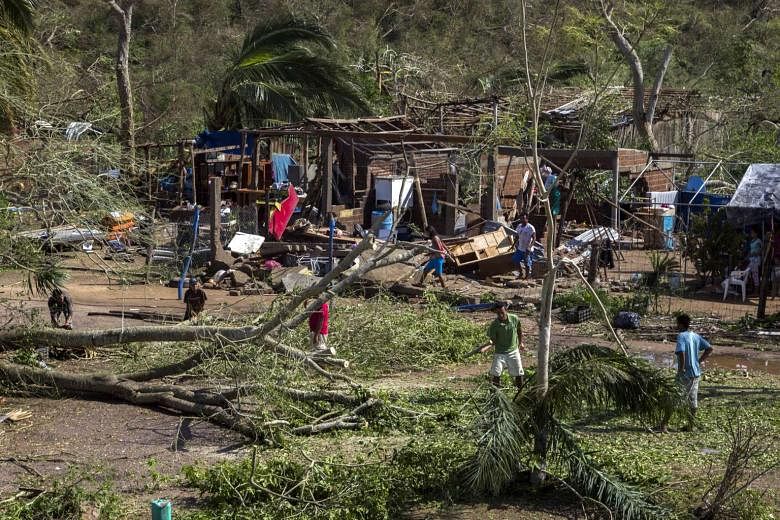PUERTO VALLARTA, Mexico (REUTERS) - Barrelling in from the Pacific, powerful Hurricane Patricia moved so quickly past the Mexican coast that it failed to saturate the ground and produce the devastating flooding that often comes with storms of this size, meteorologists said on Saturday.
The Category 5 storm appeared to have caused less damage than originally feared after it made landfall on Friday south of Puerto Vallarta and north of Manzanillo as one of the most powerful storms on record with winds of about 266kmh.
Cutting a path through a sparsely populated coastline dotted with fishing villages and exclusive villas, Patricia quickly met high, jagged coastal mountains that cut the storm's force.
Early Friday, officials warned that Patricia could cause catastrophic damage after it drew strength in the eastern Pacific Ocean from the warm waters of this year's El Nino climate phenomenon and reached a windspeed at sea of 320kmh, making it the strongest storm recorded in the Western Hemisphere.
While the major cities were largely spared, the extent of damage to the more remote areas was still unclear.
Patricia moved over land at a speed of about 32kmh, which is fast compared to other storms, meteorologists said.
"You always want a fast-moving storm as opposed to a slow-moving storm," said Dennis Feltgen, spokesman for the National Hurricane Centre in Miami.
"If this was moving slower, if it had stalled out over Mexico, we'd be looking at a catastrophic flooding event, but that's not the case here," he added.
In comparison to Patricia, Hurricane Manuel moved more slowly when it made landfall in western Mexico in 2013, and it was a heavily destructive and deadly storm, said Jeff Masters, director of meteorology at commercial weather forecaster Weather Underground.
Manuel killed more than 100 people in Mexico, mostly due to heavy rains which were particularly destructive in mountain areas, according to the National Hurricane Centre Western Mexico's coastal topography also appeared to have blunted the force of the hurricane.
The ocean water off the coast where the hurricane made landfall is deep, allowing some of the water that the storm accumulated in its center to drop and disperse before hitting land, Masters said.
If Patricia had struck a large area of shallow water just off the coast, the hurricane would have gathered a greater volume of water into a storm surge, Masters said.
Mexico's jagged mountain ranges in close proximity to the coast were also credited with breaking the hurricane's force by disrupting the circulation of air in the storm.
"High mountains like that just tear storms like this apart," Masters said.

